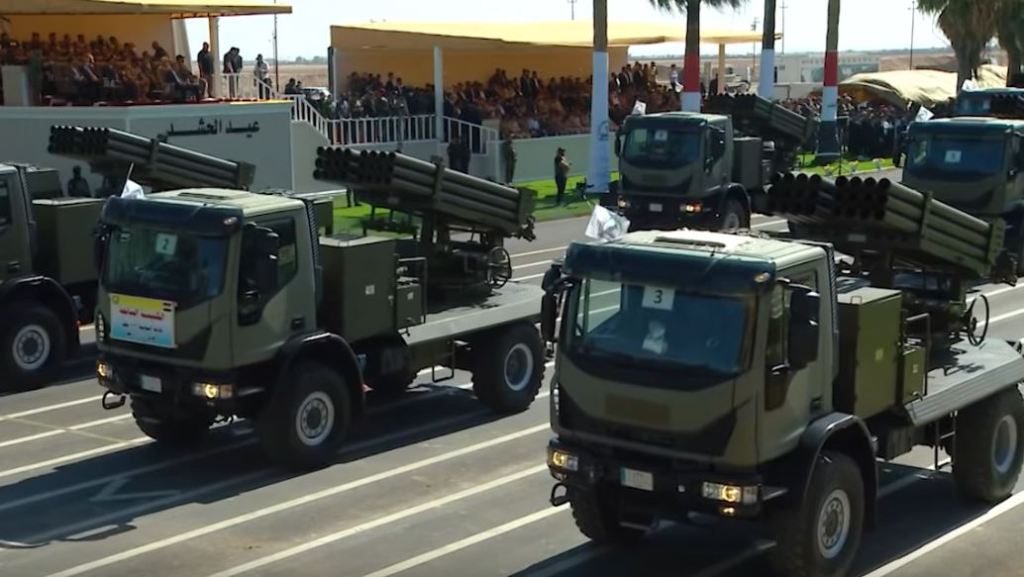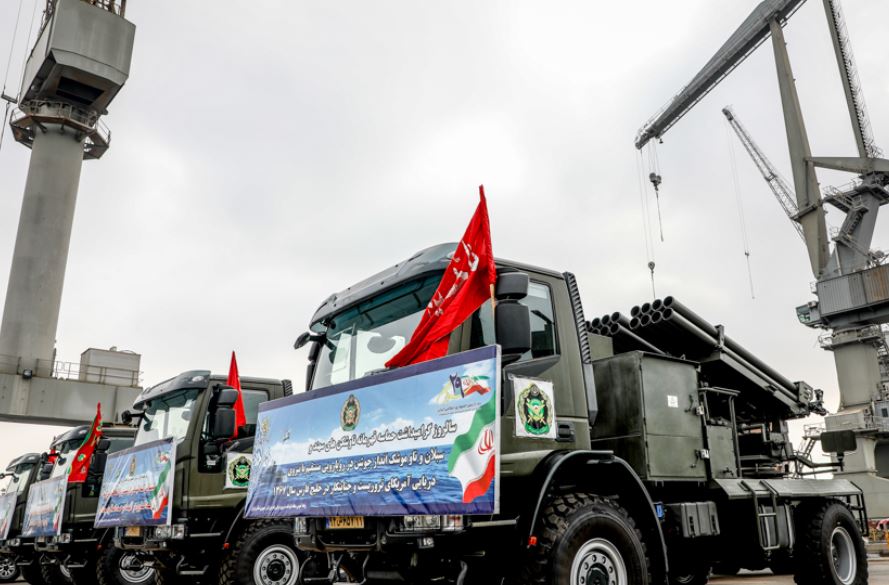Iran Is Sending Grad Rockets To All Its Friends

There’s now sufficient evidence in the public domain that Tehran is delivering substantial amounts of conventional weapons to its largest regional proxies. On June 26 the Iraqi government participated in a rare commemorative event in Camp Ashraf, a military base north of Baghdad, where the PMF held a parade marking seven years since it mobilized against ISIS. The footage and imagery that emerged showed an awesome variety of Iranian-made military equipment and weapon systems, including various types of artillery and drones.
The PMF were also in possession of so much rocket artillery it makes one start to think they might be preparing for another war.
Seen at the parade, which involved thousands of PMF fighters, were different mobile rocket artillery systems. Some of them were improvised locally while others originated from Iran–the prolific Safir jeeps were in force including the variants that mounted 12-barrel launchers for 107mm rockets. Another fearsome addition were a battery of trucks originating from the US manufacturer Navistar. These 6×6 cargo vehicles are supplied to the Iraqi armed forces but in this case they’ve been repurposed by the PMF as mobile rocket launchers.

The ubiquitous Soviet vintage Grad launcher is also in the PMF’s arsenal. Rather than the familiar BM-21, however, the Iranian variant designated the “Raad” is supplied to them. These appeared as Iveco 4×4 cargo trucks mounting 24 launch tubes each. The ultimate proof of their Iranian origins was the appearance of similar vehicles, albeit with fewer launch tubes, at an Iranian pier where a new corvette was being launched for the navy in the same month. A battery of Iveco 4×4 trucks were on display at this other event as proof the armed forces were still modernizing inventory. (See photo above.)
Iran’s mass-production of rocket artillery originates in the 1980s when it needed to sustain its war effort against Iraq. The same decade marked the Islamic Republic’s original acquisition of ballistic missiles that have since become indispensable for Iran’s national security. As for Iranian 122mm Grad rockets the 40-tube launchers and other variants are in continuous production for different transporters. These are usually licensed MAN and Mercedes Benz trucks. But in recent years portable Grad launchers for pickup trucks were introduced; the Aras 2, for example, is able to carry eight barrels or a modular launcher with alternating barrels for 122mm munitions or larger.
Iran’s military-industrial sector is able to mass-produce upgraded Grad rockets that have new guidance systems and warheads loaded with cluster munitions. There’s evidence these are now in possession of Yemen’s notorious Ansar Allah, also known as the Houthis, whose drone and missile arsenal is large enough for them to launch persistent attacks on Saudi Arabia. For the PMF to maintain a sizable rocket artillery stockpile is a clear sign they are assuming the form and function of a conventional military. This is all the more suspicious because Iraq’s greatest national security threat is an insurgency along its border with Syria. Outside the relationship between the US-led Operation Inherent Resolve and Iraqi security forces the PMF have little contribution to the effort.
US forces stationed in the Levant, along with Israel and Saudi Arabia, are at considerable risk from the PMF once it grows into a separate military directed from Tehran. On one hand, just as Iran keeps enlarging the PMF arsenal, the same can be extended to Syria and raise the possibility of these being arrayed near the Golan Heights. On the other hand, the PMF in Iraq and Ansar Allah in Yemen have amassed drone fleets and missile arsenals that are able to strike within Saudi Arabia. The specter of both these factions having more rocket artillery and long-range missiles at their disposal should put Riyadh on permanent alert.













Comments are closed.